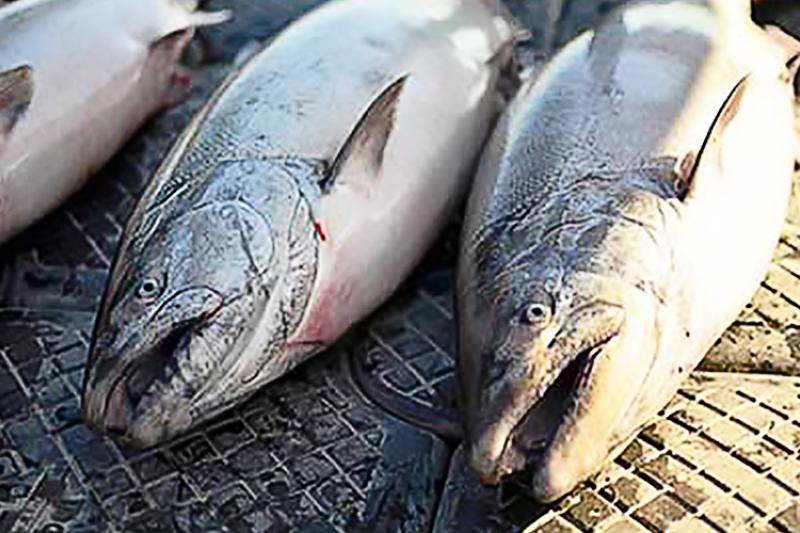NOAA Fisheries and Alaska Department of Fish and Game, with support from the Alaska Ocean Observing System, use spring weather and other environmental data summarized on the AOOS website to estimate the arrival of Chinook salmon on the river delta. Spring environmental conditions were about average this year, based on a comparison to the past 54 years. Each year’s run timing is determined by factors related to the amount of sea ice cover between St. Lawrence Island and the Yukon Delta, April mean air temperatures in Nome, and average marine surface temperatures just off the delta during May. In the past couple of years, predicted arrival dates were within three days of the actual start of these annual runs.
“We provide information on run timing to managers so they can better manage fishing activities,” said Phil Mundy, director of the NOAA Fisheries’ Alaska Fisheries Science Center’s Auke Bay Laboratory in Juneau, Alaska. Knowing if the run is average early or late helps the managers interpret data coming in from early catches of Chinook on the delta. Small catches in the first two weeks of June could mean either a small or big return, depending on the run timing.”
More background on the run timing forecast project and the history of the fishery are available online at the Alaska Ocean Observing System and the Alaska Department of Fish and Game.
“The Yukon River Chinook salmon timing forecast, a climate-based model, gives us a picture of when fish are likely to start passing along the coast and entering the river so we can time our conservative management actions appropriate to protect those early fish,” said Stephanie Schmidt, Alaska Department of Fish and Game. “Otherwise, our first look at the run isn’t until fish hit our test fishery located 20 miles upriver from the coast.”
The Alaska Department of Fish and Game’s mission is to protect, maintain, and improve the fish, game, and aquatic plant resources of the state, and manage their use and development in the best interest of the economy and the well-being of the people of the state, consistent with the sustained yield principle.
The mission of the Alaska Ocean Observing System (AOOS) is to address regional and national needs for ocean information, gather specific data on key coastal and ocean variables, and ensure timely and sustained dissemination and availability of these data.

